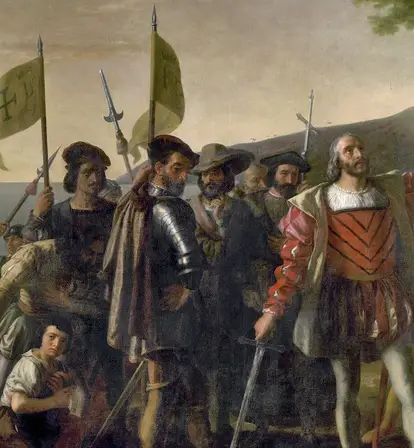When America was "discovered" by Italian explorer Christopher Columbus in 1492, Viking navigators had already landed on the New World's shores centuries before.

Library of CongressWhile Christopher Columbus is known as the man who discovered America in 1492, Norse explorers had actually reached Newfoundland circa 1000 C.E.
The question of who discovered America is a difficult one to answer. While many schoolchildren are taught that Christopher Columbus was responsible for the discovery of America in 1492, the true history of the continent’s exploration stretches back long before Columbus was even born.
But did Christopher Columbus discover America before other Europeans? Modern research has suggested that wasn’t even the case. Perhaps most famously, a group of Icelandic Norse explorers led by Leif Erikson likely beat Columbus to the punch by around 500 years.
But that doesn’t necessarily mean that Erikson was the first explorer who discovered America. Throughout the years, scholars have theorized that people from Asia, Africa, and even Ice Age Europe may have reached American shores before him. There’s even a popular legend about a band of Irish monks who made it to America in the sixth century.
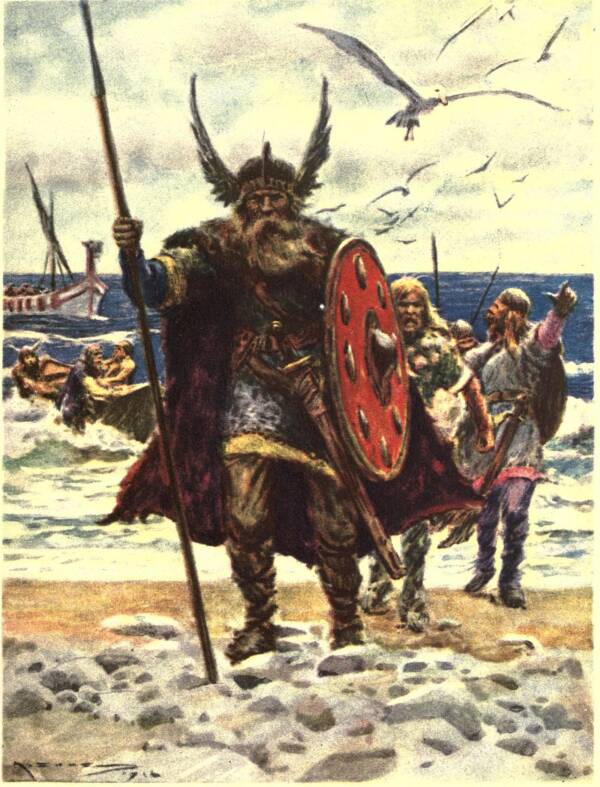
Wikimedia Commons“The Landings of Vikings on America” by Arthur C. Michael. 1919.
Nonetheless, Columbus remains one of the most well known explorers of his time — and he’s still celebrated every year on Columbus Day. However, this holiday has become increasingly scrutinized in recent years — especially due to Columbus’ cruelty toward Indigenous people he encountered in the Americas. So some states have opted to celebrate Indigenous Peoples’ Day instead, urging us to reassess the very idea of the “discovery” of America.
At the end of the day, the question of who discovered America and when America was discovered can’t be fully answered without also asking what it means to “find” a place that is already inhabited by millions of people. From pre-Columbus America and Erikson’s settlement to varying other theories and modern-day debates, this is the full history behind the “discovery” of America.
Who Discovered America? Inside The Historical Evidence
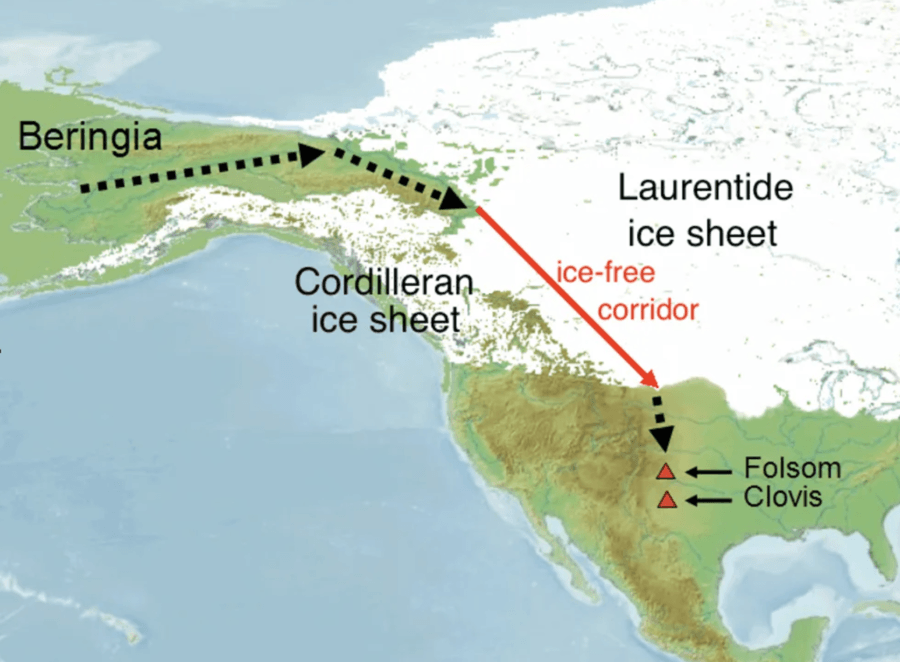
Wikimedia CommonsDid Christopher Columbus discover America? This map of the ancient Bering Land Bridge suggests otherwise.
When Europeans arrived in the New World, they almost immediately noticed other people who already made a home there. However, they too had to discover America at some point. So when was America discovered — and who actually found it first?
Science has shown that during the last ice age, people journeyed across an ancient land bridge connecting modern-day Russia to modern-day Alaska. Known as the Bering Land Bridge, it’s now submerged underwater but it lasted from about 30,000 years ago to 16,000 years ago. Of course, this would provide ample time for curious humans to explore.
When exactly these people crossed over remains unknown. However, genetic studies have shown that the first humans to cross became genetically isolated from people in Asia about 25,000 to 20,000 years ago.
Meanwhile, archeological evidence has shown that humans reached the Yukon at least 14,000 years ago. However, carbon dating in Yukon’s Bluefish Caves has suggested that humans could have even been living there 24,000 years ago. But these theories about the discovery of America are far from settled.

Ruth GotthardtArchaeologist Jacques Cinq-Mars at the Bluefish Caves in the Yukon in the 1970s.
Up until the 1970s, the first Americans were believed to be the Clovis people — who got their names from an 11,000-year-old settlement found near Clovis, New Mexico. DNA suggests they are the direct ancestors of about 80 percent of Indigenous people throughout the Americas.
So even though evidence suggests that they weren’t the first, some scholars still believe these people deserve credit for the discovery of America — or at least the part we now know as the United States. But either way, it’s clear that plenty of people got there thousands of years before Columbus.
And what did America look like just before Columbus arrived? While founding myths suggest that the land was sparsely populated by nomadic tribes living lightly on the land, research over the past few decades has shown that many early Americans lived in complex, highly organized societies.
Historian Charles C. Mann, author of 1491, explained it as such: “From southern Maine down to about the Carolinas, you would have seen pretty much the entire coastline lined with farms, cleared land, interior for many miles and densely populated villages generally rounded with wooden walls.”
He continued, “And then in the Southeast, you would have seen these priestly chiefdoms, which were centered on these large mounds, thousands and thousands of them, which still exist. And then as you went further down, you would have come across what is often called the Aztec empire… which was a very aggressive, expansionistic empire that had one of the world’s largest cities as its capital, Tenutchtitlan, which is now Mexico City.”
But of course, the Americas would look very different after Columbus arrived.
Did Christopher Columbus Discover America?
Widely known as the man who discovered America, Christopher Columbus arrived in the Americas in 1492 in what has been described by many historians as the beginning of the Colonial Period. Though the explorer believed he’d reached the East Indies, he was actually in the modern-day Bahamas.
Indigenous peoples with fishing spears greeted the men stepping off the ships. Columbus dubbed the island San Salvador and its Taíno natives “Indians.” (The now-extinct natives called their island Guanahani.)
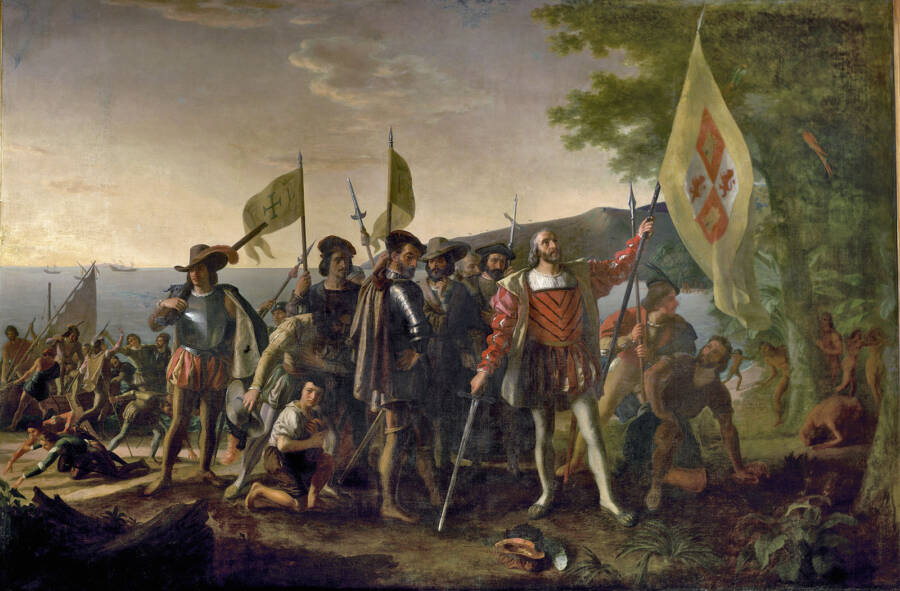
Wikimedia Commons“Landing of Columbus” by John Vanderlyn. 1847.
Columbus then set sail for several other islands, including Cuba and Hispaniola, which today is known as Haiti and the Dominican Republic. Contrary to popular belief, there is no evidence that Columbus ever set foot on mainland North America.
Still confident he had discovered islands in Asia, Columbus built a small fort on Hispaniola and left 39 men behind to collect gold samples and await the next Spanish expedition. Before heading back to Spain, he kidnapped 10 Indigenous people so he could train them as interpreters and exhibit them at the royal court. One of them died at sea.
Columbus returned to Spain where he was greeted as a hero. Instructed to continue his work, Columbus returned to the Western Hemisphere across three more voyages until the early 1500s. Throughout these expeditions, European settlers stole from the Indigenous people, abducted their wives, and seized them as captives to be taken to Spain.

Wikimedia Commons“The Return of Christopher Columbus” by Eugene Delacroix. 1839.
As the amount of Spanish colonists increased, the Indigenous populations across the islands decreased. Countless Native people died from European diseases such as smallpox and measles, to which they had no immunity. On top of that, the settlers often forced the islanders into labor in the fields, and if they resisted they would either be killed or sent to Spain as slaves.
As for Columbus, though hailed as the man who discovered America, he was plagued with ship trouble during his final trip back to Spain and was marooned in Jamaica for a year before he was rescued in 1504. He died just two years later — still incorrectly believing that he’d found a new way to Asia.
Perhaps this is why America itself wasn’t named after Columbus and instead a Florentine explorer named Amerigo Vespucci. It was Vespucci who put forth the then-radical idea that Columbus landed on a different continent that was completely separate from Asia.
Nonetheless, the Americas had been home to Indigenous people for millennia before either of them had ever been born — with even other groups of Europeans preceding Columbus.
Leif Erikson: The Viking Who Found America
Leif Erikson, a Norse explorer from Iceland, had adventuring in his blood. His father Erik the Red had founded the first European settlement on what is now called Greenland in 980 A.D.
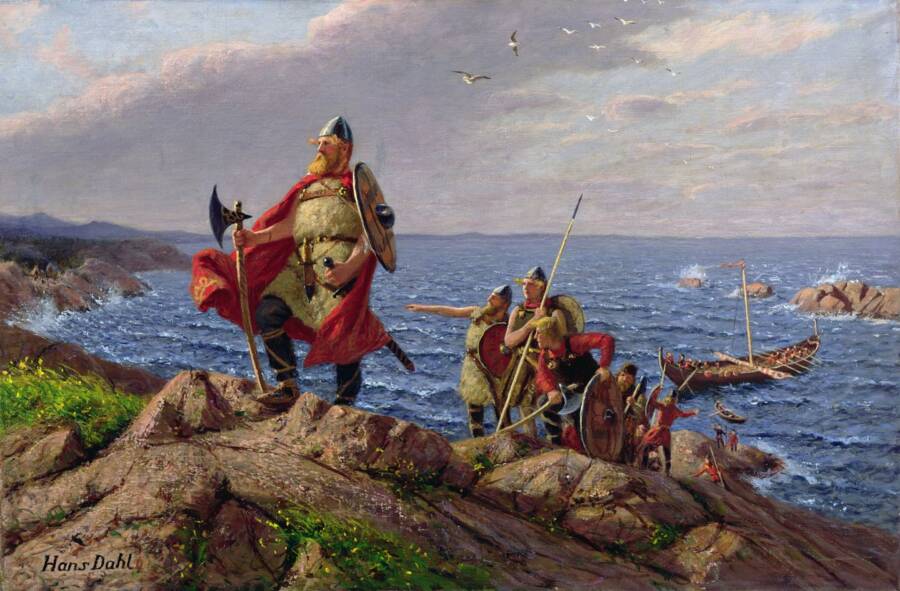
Wikimedia Commons“Leif Erikson Discovers America” by Hans Dahl (1849-1937).
Born in Iceland around 970 A.D., Erikson likely grew up in Greenland before sailing east to Norway when he was around 30 years old. It was here that King Olaf I Tryggvason converted him to Christianity, and inspired him to spread the faith to Greenland’s pagan settlers. But shortly thereafter, Erikson instead arrived in America around 1000 A.D. To this day, many believe that Leif Erikson is actually the man who discovered America first.
There are varying historical accounts of his discovery of America. One saga claims that Erikson sailed off course while he was returning to Greenland and happened upon North America by accident. But another saga holds that his discovery of the land was intentional — and that he heard about it from another Icelandic trader who spotted it but never set foot on the shores. Intent on going there, Erikson raised a crew of 35 men and set sail.
While these tales from the Middle Ages might appear mythical, archaeologists actually uncovered tangible evidence supporting these sagas. Norwegian explorer Helge Ingstad found remains of a Viking settlement in L’Anse aux Meadows, Newfoundland in the 1960s — right where the Norse legend claimed Erikson had set up camp.
Not only were the remains clearly of Norse origin, they were also dated back to Erikson’s lifetime thanks to radiocarbon analysis.
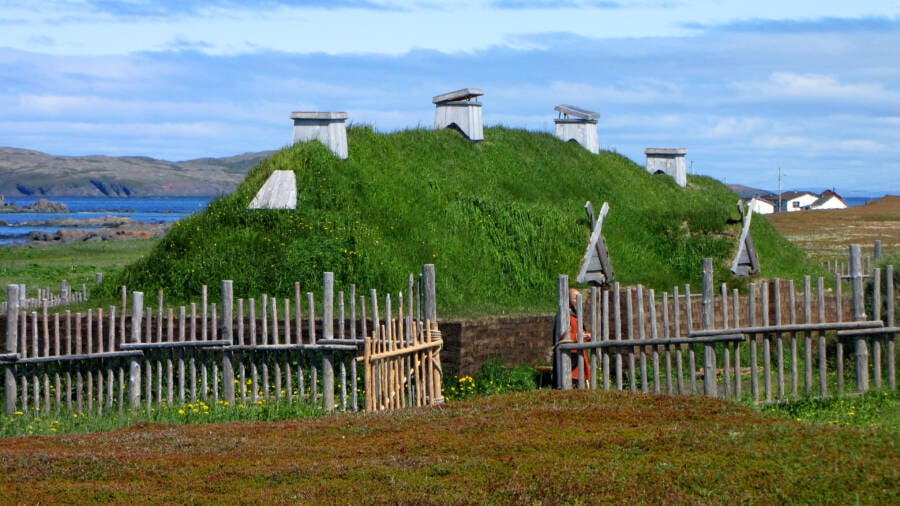
Wikimedia CommonsLeif Erikson’s recreated colonization site at L’Anse aux Meadows, Newfoundland.
And yet, many people still ask, “Did Christopher Columbus discover America?” While it appears Erikson had him beat, the Italians accomplished something the Vikings could not: They opened a pathway from the Old World to the New. Conquest and colonization were quick to follow the 1492 discovery of America, with life on both sides of the Atlantic changed forever.
But as Russell Freedom, author of Who Was First? Discovering the Americas, put it: “[Columbus] wasn’t the first and neither were the Vikings — that is a very Euro-centric view. There were millions of people here already, and so their ancestors must have been the first.”
Further Theories About The Discovery Of America
In 1937, an influential Catholic group known as the Knights of Columbus successfully lobbied both Congress and President Franklin D. Roosevelt to honor Christopher Columbus with a national holiday. They were eager to have a Catholic hero celebrated in regard to America’s founding.
With the national holiday gaining traction in the decades since then, Leif Erikson Day arguably never had a chance to compete. Declared in 1964 by President Lyndon Johnson to fall on October 9th each year, it aims to honor the Viking explorer and the Norse roots of America’s population.
While modern-day criticism of Columbus Day is largely rooted in the man’s horrendous treatment of the Indigenous populations he encountered, it has also served as a conversation starter for people unaware of America’s history.
As such, it isn’t just the man’s character being reassessed, but also his actual accomplishments — or lack thereof. Aside from Erikson reaching the continent before Columbus, there are additional theories regarding other groups who did as well.
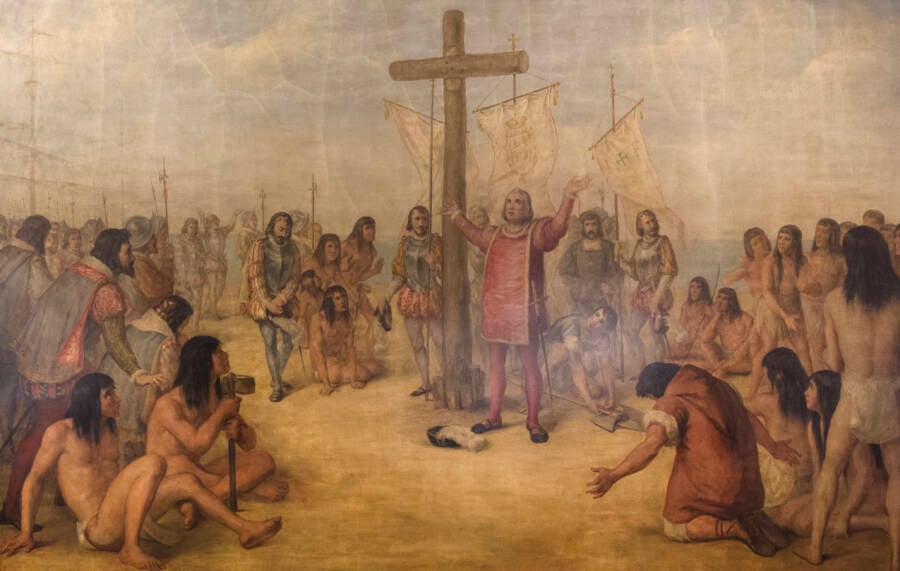
Library of CongressA depiction of when America was discovered by Christopher Columbus in 1492, a narrative now widely believed to be inaccurate by historians and archaeologists.
Historian Gavin Menzies has claimed that a Chinese fleet helmed by Admiral Zheng He reached the Americas in 1421, using a Chinese map allegedly from 1418 as his evidence. However, this theory remains controversial.
Yet another controversial claim about who discovered America has sixth-century Irish monk St. Brendan finding the land around 500 A.D. Known for establishing churches in Britain and Ireland, he purportedly set out on a journey in a primitive ship to North America — with only a Latin book from the ninth century supporting the claim.
Did Christopher Columbus discover America? Did the Vikings? Ultimately, the most accurate answer lies with the Indigenous people — as they walked on the land thousands of years before Europeans even knew it existed.
After learning the true history of who discovered America, read about the study suggesting humans arrived in North America 16,000 years ago. Then, learn about how old America is.
